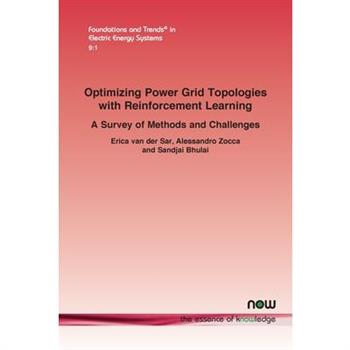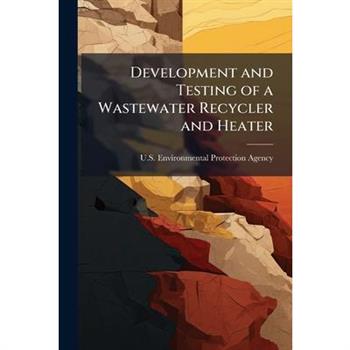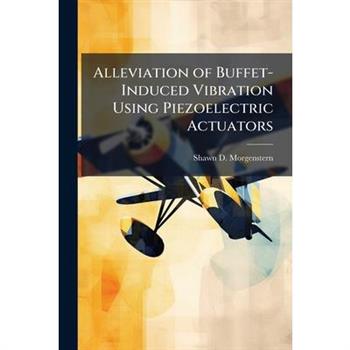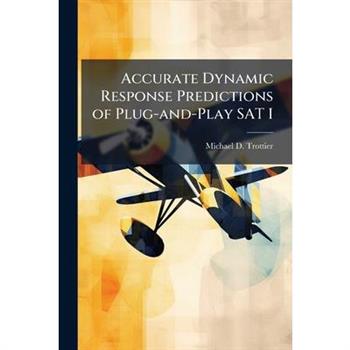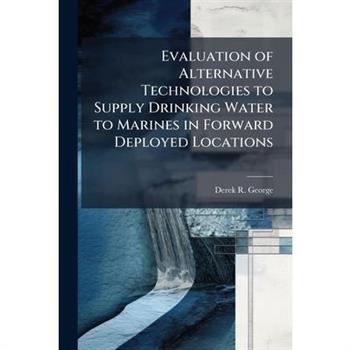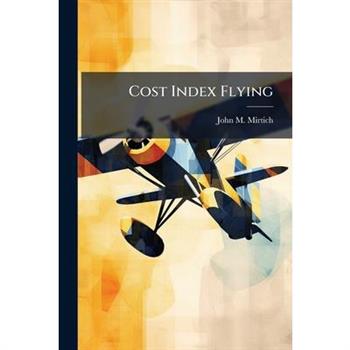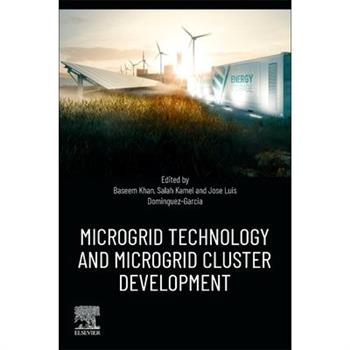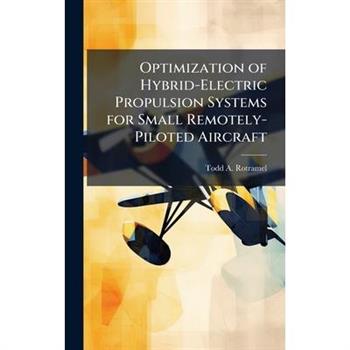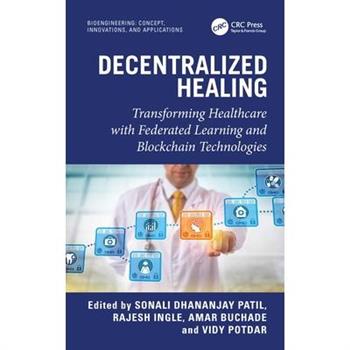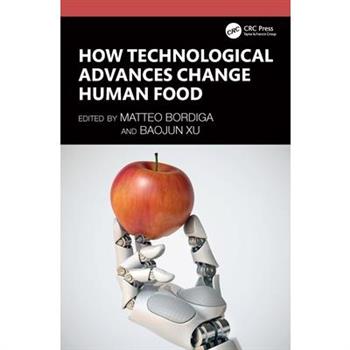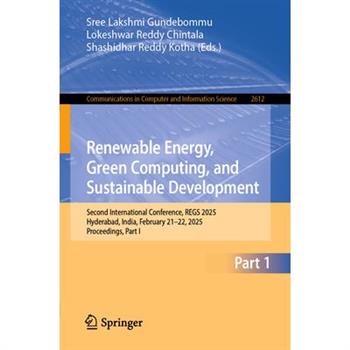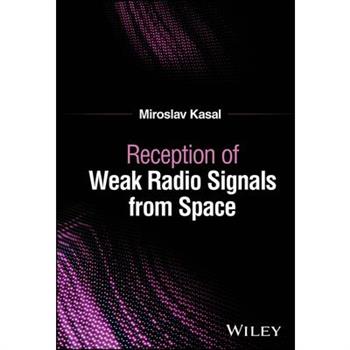Structural Control and Fault Detection of Wind Turbine Systems
With the rapid growth of wind energy worldwide, and the increasing size of wind turbine systems, addressing challenges in their operation and control is becoming increasingly important. These challenges affect all components of wind turbine systems, and require an integrated approach to optimize safety, cost, structural integrity and system survivability, while maintaining the desired performance quality. This book has established itself as a reliable reference for researchers and engineers in mechatronics and control, specifically for wind power, as well as for manufacturers of wind farm equipment and turbine systems. It conveys theoretical and practical techniques that are instrumental for the control of wind turbine systems, such as load analysis, control concepts, health diagnosis and monitoring, and fuzzy fault tolerant control. The new edition features revised as well as all-new chapters covering recent advances in the field, on both small turbines and large systems. Topics include numerical and experimental tools for turbine load analysis, health monitoring, control, transformer models, power prediction, robust fuzzy fault tolerant control, and use of digital twins.
Optimizing Power Grid Topologies with Reinforcement Learning
Electrical power grids form the backbone of modern society, being responsible for transporting electricity from producers to consumers 24 hours a day, 365 days a year. Operating these grids is a demanding control task that requires continuous monitoring and frequent interventions by skilled experts to maintain network stability, keep power flow within the thermal limits of the equipment, and ensure voltage and frequency levels are met. Power grid operation is becoming increasingly complex due to the rising integration of renewable energy sources and the need for more adaptive control strategies. Reinforcement Learning (RL) has emerged as a promising approach to power network control, offering the potential to enhance decision-making in dynamic and uncertain environments. The Learning To Run a Power Network (L2RPN) competitions have played a key role in accelerating research by providing standardized benchmarks and problem formulations, leading to rapid advancements in RL-based methods. This monograph provides a comprehensive and structured overview of RL applications for power grid topology optimization, categorizing existing techniques, highlighting key design choices, and identifying gaps in current research. Additionally, a comparative numerical study evaluating the impact of commonly applied RL-based methods is presented, offering insights into their practical effectiveness. By consolidating existing research and outlining open challenges, this work aims to provide a foundation for future advancements in RL-driven power grid optimization.
Digest of United States Automobile Patents From 1789 to July 1, 1899, Including All Patents Officially Classed as Traction-engines for the Same Period. Chronologically Arranged ... Together With Lists
A comprehensive historical record, "Digest of United States Automobile Patents From 1789 to July 1, 1899" meticulously compiles patents related to automobiles and traction engines during the formative years of the automotive industry. This volume, compiled by James T. Allen, provides a chronological arrangement of patents, offering invaluable insights into the technological evolution of early automobiles. Included are detailed lists of patents in related classes such as portable engines, road engines, steam carriages, and motor carriages. This digest serves as an essential reference for historians, researchers, and anyone interested in the early development of automotive technology and intellectual property. Discover the groundbreaking inventions and innovations that paved the way for modern transportation with this detailed historical compendium.This work has been selected by scholars as being culturally important, and is part of the knowledge base of civilization as we know it. This work was reproduced from the original artifact, and remains as true to the original work as possible. Therefore, you will see the original copyright references, library stamps (as most of these works have been housed in our most important libraries around the world), and other notations in the work.This work is in the public domain in the United States of America, and possibly other nations. Within the United States, you may freely copy and distribute this work, as no entity (individual or corporate) has a copyright on the body of the work.As a reproduction of a historical artifact, this work may contain missing or blurred pages, poor pictures, errant marks, etc. Scholars believe, and we concur, that this work is important enough to be preserved, reproduced, and made generally available to the public. We appreciate your support of the preservation process, and thank you for being an important part of keeping this knowledge alive and relevant.
The Engineer's Guide To The Royal And Mercantile Navies, By A Practical Engineer
"The Engineer's Guide To The Royal And Mercantile Navies, By A Practical Engineer" offers insights into the engineering aspects of naval and merchant ships. Written by a practicing engineer, this book likely provides practical guidance and technical details relevant to the construction, operation, and maintenance of vessels. It is a valuable resource for understanding the technologies and engineering practices used in both the Royal and Mercantile Navies, offering a glimpse into the maritime industry of its time.This work has been selected by scholars as being culturally important, and is part of the knowledge base of civilization as we know it. This work was reproduced from the original artifact, and remains as true to the original work as possible. Therefore, you will see the original copyright references, library stamps (as most of these works have been housed in our most important libraries around the world), and other notations in the work.This work is in the public domain in the United States of America, and possibly other nations. Within the United States, you may freely copy and distribute this work, as no entity (individual or corporate) has a copyright on the body of the work.As a reproduction of a historical artifact, this work may contain missing or blurred pages, poor pictures, errant marks, etc. Scholars believe, and we concur, that this work is important enough to be preserved, reproduced, and made generally available to the public. We appreciate your support of the preservation process, and thank you for being an important part of keeping this knowledge alive and relevant.
Cheese Making;
"Cheese Making" is a comprehensive guide to the art and science of crafting cheese, intended for both home enthusiasts and those involved in the dairy industry. Written by John Wright Decker and Fritz Wilhelm Woll, this book, originally published in 1909, provides detailed instructions and practical advice on all aspects of cheese production.From selecting the right milk to understanding the processes of curdling, cutting, and pressing, the authors cover everything needed to produce a variety of cheeses. The book includes chapters on different types of cheese, such as cheddar, Swiss, and brick cheese, offering insights into the specific techniques required for each.This classic text is a valuable resource for anyone interested in the history of cheese making, as well as those looking to preserve traditional methods in the modern era. With its clear explanations and thorough coverage, "Cheese Making" remains a relevant and informative guide for anyone passionate about this time-honored craft.This work has been selected by scholars as being culturally important, and is part of the knowledge base of civilization as we know it. This work was reproduced from the original artifact, and remains as true to the original work as possible. Therefore, you will see the original copyright references, library stamps (as most of these works have been housed in our most important libraries around the world), and other notations in the work.This work is in the public domain in the United States of America, and possibly other nations. Within the United States, you may freely copy and distribute this work, as no entity (individual or corporate) has a copyright on the body of the work.As a reproduction of a historical artifact, this work may contain missing or blurred pages, poor pictures, errant marks, etc. Scholars believe, and we concur, that this work is important enough to be preserved, reproduced, and made generally available to the public. We appreciate your support of the preservation process, and thank you for being an important part of keeping this knowledge alive and relevant.
The Complete Practical Brewer
The Complete Practical Brewer is a comprehensive guide to the art and science of brewing, written by Marcus Lafayette Byrn. This book provides detailed instructions and insights into every aspect of beer production, making it an invaluable resource for both amateur and professional brewers. From malting and mashing to fermentation and finishing, Byrn covers all the essential techniques with clarity and precision.Readers will find detailed guidance on selecting the finest ingredients, understanding the chemical processes involved in brewing, and troubleshooting common issues. The book also features a variety of recipes for different beer styles, allowing brewers to experiment and perfect their craft. Whether you're looking to start brewing your own beer or improve your existing skills, The Complete Practical Brewer offers a wealth of practical advice and time-tested methods. This classic work remains a relevant and essential addition to any brewer's library, preserving the knowledge and traditions of brewing for generations to come.This work has been selected by scholars as being culturally important, and is part of the knowledge base of civilization as we know it. This work was reproduced from the original artifact, and remains as true to the original work as possible. Therefore, you will see the original copyright references, library stamps (as most of these works have been housed in our most important libraries around the world), and other notations in the work.This work is in the public domain in the United States of America, and possibly other nations. Within the United States, you may freely copy and distribute this work, as no entity (individual or corporate) has a copyright on the body of the work.As a reproduction of a historical artifact, this work may contain missing or blurred pages, poor pictures, errant marks, etc. Scholars believe, and we concur, that this work is important enough to be preserved, reproduced, and made generally available to the public. We appreciate your support of the preservation process, and thank you for being an important part of keeping this knowledge alive and relevant.
Cheese Making;
"Cheese Making" is a comprehensive guide to the art and science of crafting cheese, intended for both home enthusiasts and those involved in the dairy industry. Written by John Wright Decker and Fritz Wilhelm Woll, this book, originally published in 1909, provides detailed instructions and practical advice on all aspects of cheese production.From selecting the right milk to understanding the processes of curdling, cutting, and pressing, the authors cover everything needed to produce a variety of cheeses. The book includes chapters on different types of cheese, such as cheddar, Swiss, and brick cheese, offering insights into the specific techniques required for each.This classic text is a valuable resource for anyone interested in the history of cheese making, as well as those looking to preserve traditional methods in the modern era. With its clear explanations and thorough coverage, "Cheese Making" remains a relevant and informative guide for anyone passionate about this time-honored craft.This work has been selected by scholars as being culturally important, and is part of the knowledge base of civilization as we know it. This work was reproduced from the original artifact, and remains as true to the original work as possible. Therefore, you will see the original copyright references, library stamps (as most of these works have been housed in our most important libraries around the world), and other notations in the work.This work is in the public domain in the United States of America, and possibly other nations. Within the United States, you may freely copy and distribute this work, as no entity (individual or corporate) has a copyright on the body of the work.As a reproduction of a historical artifact, this work may contain missing or blurred pages, poor pictures, errant marks, etc. Scholars believe, and we concur, that this work is important enough to be preserved, reproduced, and made generally available to the public. We appreciate your support of the preservation process, and thank you for being an important part of keeping this knowledge alive and relevant.
A Practical Treatise On Malting And Brewing
"A Practical Treatise On Malting And Brewing" by William H. Ford offers a comprehensive exploration of the malting and brewing processes. This treatise provides insights into the historical development of the malt trade and its legal framework, drawing from the author's extensive forty years of experience in the field.This book is invaluable for those interested in the technical aspects of creating malt and beer. Ford's detailed examination provides practical knowledge essential for both industry professionals and enthusiasts eager to understand the intricacies of brewing. Delve into the historical context and practical techniques that have shaped the brewing industry.This work has been selected by scholars as being culturally important, and is part of the knowledge base of civilization as we know it. This work was reproduced from the original artifact, and remains as true to the original work as possible. Therefore, you will see the original copyright references, library stamps (as most of these works have been housed in our most important libraries around the world), and other notations in the work.This work is in the public domain in the United States of America, and possibly other nations. Within the United States, you may freely copy and distribute this work, as no entity (individual or corporate) has a copyright on the body of the work.As a reproduction of a historical artifact, this work may contain missing or blurred pages, poor pictures, errant marks, etc. Scholars believe, and we concur, that this work is important enough to be preserved, reproduced, and made generally available to the public. We appreciate your support of the preservation process, and thank you for being an important part of keeping this knowledge alive and relevant.
Analytical Techniques and Methods for Biomass
This book deals with the application of techniques and methods of chemical analysis for the study of biomass and its conversion processes. It aims to fill the existing gap in the literature on this subject. The application of various techniques and analytical methods is presented straightforwardly, enabling readers to choose the most appropriate methodologies for analyzing the major classes of plant biomass and their products. Modern chemistry plays a crucial economic role in industrial activities based on biomass. There is an increasing emphasis on its application, specifically in the development of biorefineries, and the principles of green chemistry allow effective use of biomass while significantly reducing environmental impact. In this context, analytical chemistry can contribute significantly to the supply chains of biomass, be it plant or animal origin. However, biomass from plant sources presents both the greatest challenges and the highest opportunity for technical, scientific, and economic progress due to its diverse chemical constitution. Chemical analysis can be used to examine the composition of biomass, characterize its physicochemical properties, and monitor their conversion processes. This approach can enhance the quality of products derived from biomass and expand their potential applications. The quality of the biomass used determines the product quality. Therefore, reliable information about the chemical composition of the biomass to establish the best use which will influence harvest and preparation steps is essential. Accordingly, this book includes contributions from select international experts who discuss key aspects of biomass structure, their physical and chemical properties, the parameters of conversion processes, the products and by-products formation and quantification, and quality parameters.
Your Neighbors Will Kill You
Navigate an unpredictable world with "Your Neighbors Will Kill You." This essential guide delivers the skills and mindset you need to confront societal instability, personal defense, and sustainability challenges head-on.Examine the fragility of urban life, recognize signs of economic and social collapse, and develop a resilient survivor's mindset.Master personal and community defense tactics while fostering unity and self-reliance in your neighborhood.Embrace the art of adaptability, leverage technology wisely, and prioritize mental health for enduring resilience.Arm yourself with knowledge, debunk preparedness myths, and step confidently into uncertainty with this indispensable resource.
Spirited Innovation
Embark on a transformative exploration into the fascinating realm of liquid foods with "Spirited Innovation: Scientific principles of liquid food mechanics and texture creation." This definitive volume meticulously unravels the complex interplay of physics, chemistry, and sensory perception that shapes every pour, every sip, and every delightful mouthfeel. It is an indispensable guide for anyone dedicated to mastering the art and science of formulating liquid food products, from the subtle nuances of a refined beverage to the precise requirements of specialized nutritional solutions.Delve deep into the foundational scientific principles that underpin all liquid food systems. Understand the critical importance of viscosity - the inherent resistance to flow - and how its manipulation is key to desired consistency. Grasp the practical implications of laminar versus turbulent flow, critical insights for optimizing processing efficiency and ensuring consistent product quality. Learn to execute precise pressure drop calculations, empowering you to design and operate processing equipment with maximal effectiveness and control over flow dynamics, a vital skill for any food engineer or technologist.Beyond the physical, discover the profound connection between scientific principles and sensory perception. This compelling segment bridges the gap between laboratory measurements and the consumer experience, illuminating the sophisticated oral processing mechanisms involved in evaluating liquid textures. Uncover the intricate and often surprising relationship between texture and flavor interactions, revealing how manipulating one can profoundly influence the perception of the other, enabling the creation of truly palatable and appealing liquid food products. The influence of colloidal and polymer chemistry on these sensory attributes is meticulously detailed, offering deeper insight into the *why* behind what we taste and feel.Master the science of heterogeneous liquid systems - the art of crafting stable emulsions and suspensions. Explore a wide array of emulsification techniques, understanding the mechanisms that create and stabilize these vital mixtures of immiscible liquids. Learn the nuanced methods for effectively stabilizing suspensions, preventing settling or separation of solid particles within liquid matrices. A dedicated examination of particle size impact provides critical knowledge for controlling stability, mouthfeel, and overall product quality, drawing heavily on the principles of colloid and food chemistry.Peer into the horizon with an exploration of personalized nutrition liquids, where texture can be finely tuned to individual dietary needs and preferences, revolutionizing health and wellness. This final chapter powerfully demonstrates the profound practical implications and the exciting future trajectory of liquid food innovation.Spirited Innovation" is more than a book; it's a masterclass in the engineering of delight, a scientific blueprint for sensory perfection. It provides the profound theoretical understanding and practical methodologies necessary to conceive, develop, and perfect liquid food products that not only meet market demands but also redefine consumer expectations. Whether you are a seasoned researcher, an aspiring product developer, or an engineer striving for process optimization, this essential resource will empower you to transform raw ingredients into captivating culinary experiences. Transform your liquid product concepts into tangible triumphs; flow towards mastery now!
Determination of Chlorinated Solvent Contamination in an Upward Flow Constructed Wetland
The purpose of this study is to determine chlorinated solvent contamination levels in an upward flow constructed wetland at Wright-Patterson Air Force Base (WPAFB), Ohio. A stratified grid sampling methodology will be used in sampling the contaminated groundwater. Analysis will be accomplished by means of purge-and-trap gas chromatography. The contaminant concentration levels will be used to enhance the design and construction of man- made wetlands used to remove chlorinated solvents from aquifers. PCE levels declined from an average of 33.97 ppb in the inflow stream to an average of 3.65 ppb in the upper layer, a 91% reduction. High concentrations occurred in areas where high hydraulic pressure gradients and hydraulic conductivities combined to allow contaminated water to migrate to the upper layers of the wetland with minimal contact time for reduction. Removing these areas from the data set increased the PCE reduction efficiency to nearly 98% with an upper level concentration average of 0.84 ppb. Trichloroethene (TCE) inflow rates averaged 0.63 ppb while TCE concentrations in the upper layer averaged 0.175 ppb. TCE concentrations peaked in the middle layer of the wetland suggesting that reduction of PCE was occurring there and in the bottom layer.This work has been selected by scholars as being culturally important, and is part of the knowledge base of civilization as we know it. This work was reproduced from the original artifact, and remains as true to the original work as possible. Therefore, you will see the original copyright references, library stamps (as most of these works have been housed in our most important libraries around the world), and other notations in the work.This work is in the public domain in the United States of America, and possibly other nations. Within the United States, you may freely copy and distribute this work, as no entity (individual or corporate) has a copyright on the body of the work.As a reproduction of a historical artifact, this work may contain missing or blurred pages, poor pictures, errant marks, etc. Scholars believe, and we concur, that this work is important enough to be preserved, reproduced, and made generally available to the public. We appreciate your support of the preservation process, and thank you for being an important part of keeping this knowledge alive and relevant.
Development and Testing of a Wastewater Recycler and Heater
The U.S. Environmental Protection Agency (EPA) was introduced on December 2, 1970 by President Richard Nixon. The agency is charged with protecting human health and the environment, by writing and enforcing regulations based on laws passed by Congress. The EPA's struggle to protect health and the environment is seen through each of its official publications. These publications outline new policies, detail problems with enforcing laws, document the need for new legislation, and describe new tactics to use to solve these issues. This collection of publications ranges from historic documents to reports released in the new millennium, and features works like: Bicycle for a Better Environment, Health Effects of Increasing Sulfur Oxides Emissions Draft, and Women and Environmental Health.This work has been selected by scholars as being culturally important, and is part of the knowledge base of civilization as we know it. This work was reproduced from the original artifact, and remains as true to the original work as possible. Therefore, you will see the original copyright references, library stamps (as most of these works have been housed in our most important libraries around the world), and other notations in the work.This work is in the public domain in the United States of America, and possibly other nations. Within the United States, you may freely copy and distribute this work, as no entity (individual or corporate) has a copyright on the body of the work.As a reproduction of a historical artifact, this work may contain missing or blurred pages, poor pictures, errant marks, etc. Scholars believe, and we concur, that this work is important enough to be preserved, reproduced, and made generally available to the public. We appreciate your support of the preservation process, and thank you for being an important part of keeping this knowledge alive and relevant.
Alleviation of Buffet-Induced Vibration Using Piezoelectric Actuators
Buffet-induced vibrations have been problematic for aircraft for many years, and can have a disastrous impact when allowed to continue to the point of structural failure. Early attempts at combating harmful vibrations included relatively passive methods such as structural enhancements and leading edge fences used to minimize the strength of vortices. However, modern techniques have shown greater promise. Synthetic jet actuators have demonstrated the capability to significantly decrease vibrational strength by altering the airflow impinging upon a structure. Piezoelectric actuators have also shown great potential. Strategically mounted to the surface of the affected structure, they impart directional strain to reduce the negative effects associated with the strain energy of specific mode shapes. The F-16 ventral fin is representative of an aircraft structure prone to failure when subjected to the buffet field from a Low Altitude Navigation and Targeting Infrared for Night (LANTIRN) pod.This work has been selected by scholars as being culturally important, and is part of the knowledge base of civilization as we know it. This work was reproduced from the original artifact, and remains as true to the original work as possible. Therefore, you will see the original copyright references, library stamps (as most of these works have been housed in our most important libraries around the world), and other notations in the work.This work is in the public domain in the United States of America, and possibly other nations. Within the United States, you may freely copy and distribute this work, as no entity (individual or corporate) has a copyright on the body of the work.As a reproduction of a historical artifact, this work may contain missing or blurred pages, poor pictures, errant marks, etc. Scholars believe, and we concur, that this work is important enough to be preserved, reproduced, and made generally available to the public. We appreciate your support of the preservation process, and thank you for being an important part of keeping this knowledge alive and relevant.
Aerospace Ground Equipment's Impact on Aircraft Availability and Deployment
The first purpose of this thesis was to study the effects of four factors on aircraft availability: the aerospace ground equipment (AGE) design configuration, the mean time between failure (MTBF) of AGE, the mean time to repair (MTTR) AGE, and the travel time to transport the AGE around the flight line. A simulation developed by Carrico (1996) that has its foundation based on the Logistics Composite Model (LCOM) was used. ANOVA results indicated that the present estimates of these factors are too broad for trade studies that include an estimate of aircraft availability to begin. The time it takes AGE to travel from one place to another around the flight line strongly affected aircraft availability. It is recommended that further AGE field observation and data collection be accomplished before the merits of one AGE cart technology is compared to another. The second purpose of this thesis was to collect as much information on the deployability and affordability of AGE as possible. Although much of the information collected was a few years old, the results suggest that new technologies improve the deployment footprint and the combined acquisition and deployment costs. Background information about support equipment and AGE is included in the study.This work has been selected by scholars as being culturally important, and is part of the knowledge base of civilization as we know it. This work was reproduced from the original artifact, and remains as true to the original work as possible. Therefore, you will see the original copyright references, library stamps (as most of these works have been housed in our most important libraries around the world), and other notations in the work.This work is in the public domain in the United States of America, and possibly other nations. Within the United States, you may freely copy and distribute this work, as no entity (individual or corporate) has a copyright on the body of the work.As a reproduction of a historical artifact, this work may contain missing or blurred pages, poor pictures, errant marks, etc. Scholars believe, and we concur, that this work is important enough to be preserved, reproduced, and made generally available to the public. We appreciate your support of the preservation process, and thank you for being an important part of keeping this knowledge alive and relevant.
Accurate Dynamic Response Predictions of Plug-and-Play SAT I
Researchers at the Air Force Institute of Technology (AFIT) and the Operationally Responsive Space (ORS) Office have conducted extensive vibration testing and structural modeling on the first ORS Plug-and-Play Satellite (PnPSAT I). The intent of this research effort is to evaluate the premise that current post-integration spacecraft environmental test requirements can be reduced or modified using accurately tuned finite element (FE) models. As part of this research, modal testing was conducted on the PnPSAT I structural panels at AFIT. The modal testing was part of a much larger series of experimental trials on various configurations of PnPSAT I at the Air Force Research Laboratory (AFRL) facilities at Kirtland Air Force Base (KAFB). Multiple sets of vibration data were also collected from accelerometers on PnPSAT I from standard and modified spacecraft prelaunch sine sweep and random vibration tests. The modal data collected at AFIT is used to tune two PnPSAT I panel FE models and the random vibration data collected at KAFB is used to tune the complete satellite for one configuration. The goal is to create an accurate FE model capable of predicting the dynamic response in a frequency range of 0-300 Hz of various PnPSAT configurations. This modeling and tuning effort will be validated by comparing FE model predictions with measured vibrational response from the previously mentioned experimental trial.This work has been selected by scholars as being culturally important, and is part of the knowledge base of civilization as we know it. This work was reproduced from the original artifact, and remains as true to the original work as possible. Therefore, you will see the original copyright references, library stamps (as most of these works have been housed in our most important libraries around the world), and other notations in the work.This work is in the public domain in the United States of America, and possibly other nations. Within the United States, you may freely copy and distribute this work, as no entity (individual or corporate) has a copyright on the body of the work.As a reproduction of a historical artifact, this work may contain missing or blurred pages, poor pictures, errant marks, etc. Scholars believe, and we concur, that this work is important enough to be preserved, reproduced, and made generally available to the public. We appreciate your support of the preservation process, and thank you for being an important part of keeping this knowledge alive and relevant.
Modeling Aerospace Ground Equipment Usage in Military Environments
The U.S. Air Force is developing Modular Aircraft Support System (MASS) program to replace the current Aerospace Ground Equipment (AGE). AGE supplies electricity, nitrogen, hydraulics and other support equipment to maintenance activities at the flight line. Current AGE makes up one-third of the deployment footprint. AGE is also mostly aircraft specific, and has reliability problems. The MASS alternative focuses on modularity based on a plug-and-play approach. The technological improvements and possible reduction in the footprint make MASS a good alternative. The AF has to determine now, whether MASS can supply similar functionality and decrease the deployment footprint to theater, while not degrading logistics support for the missions. The primary focus in this thesis is to determine the important factors that have impacts on Flying Scheduling Effectiveness (FSE), to decrease the footprint related to the important factors and MASS substitution. The maintenance requirements are examined for the flight line support of 3 types of aircrafts (F16CJ, F15C, and F15E) sent to the theater for the Aerospace Expeditionary Force (AEF) and for 7-days period. This thesis re-engineers the AWESIM model created by O'Fearna (1999) and extended by Festejo (2000), into ARENA software. The use of Response Surface Methodology (RSM) with simulation is introduced.This work has been selected by scholars as being culturally important, and is part of the knowledge base of civilization as we know it. This work was reproduced from the original artifact, and remains as true to the original work as possible. Therefore, you will see the original copyright references, library stamps (as most of these works have been housed in our most important libraries around the world), and other notations in the work.This work is in the public domain in the United States of America, and possibly other nations. Within the United States, you may freely copy and distribute this work, as no entity (individual or corporate) has a copyright on the body of the work.As a reproduction of a historical artifact, this work may contain missing or blurred pages, poor pictures, errant marks, etc. Scholars believe, and we concur, that this work is important enough to be preserved, reproduced, and made generally available to the public. We appreciate your support of the preservation process, and thank you for being an important part of keeping this knowledge alive and relevant.
Prediction of Flight-Level Radiation Hazards Due to Solar Energetic Protons
The radiation environment at aircraft altitudes is caused primarily by high-energy particles originating from outside the near-earth environment. These particles generally come from outside our solar system and are called galactic cosmic rays. Occasionally however, a transient solar event will also accelerate energetic protons toward the earth. If these protons reach the upper atmosphere, they produce secondary particles via collisions, resulting in increased radiation levels in the atmosphere. Air crews and electronic systems flying at high altitudes during one of these events are subjected to these increased levels of radiation which can result in health problems for personnel and soft errors in electronics. Much work has been performed to calculate radiation dose rates at flight levels due to non-solar energetic particles, however very few dose rate measurements have been made shortly after the eruption of a large solar flare. Using energetic proton data measured at geosynchronous orbits and Monte Carlo transport codes, an attempt is made to estimate radiation dose rates at different altitudes and locations during solar events. The goal is to provide accurate information about the radiation environment at high altitudes, which will allow aircraft and personnel to avoid locations where health or the mission may be negatively impacted.This work has been selected by scholars as being culturally important, and is part of the knowledge base of civilization as we know it. This work was reproduced from the original artifact, and remains as true to the original work as possible. Therefore, you will see the original copyright references, library stamps (as most of these works have been housed in our most important libraries around the world), and other notations in the work.This work is in the public domain in the United States of America, and possibly other nations. Within the United States, you may freely copy and distribute this work, as no entity (individual or corporate) has a copyright on the body of the work.As a reproduction of a historical artifact, this work may contain missing or blurred pages, poor pictures, errant marks, etc. Scholars believe, and we concur, that this work is important enough to be preserved, reproduced, and made generally available to the public. We appreciate your support of the preservation process, and thank you for being an important part of keeping this knowledge alive and relevant.
Probe and Drogue Aerial Refueling Requirements
The demands placed on Air Force Special Operations Command (AFSOC) aerial refueling tankers have outpaced United States Special Operations Command's (USSOCOM) ability to organize, train, and equip the current forces to accomplish their mission. This paper asks the question How will AFSOC meet the requirements for helicopter aerial refueling in the 2007 to 2012 timeframe? In order to place this question in context a short history of USSOCOM, AFSOC, and helicopter aerial refueling is presented first. Then this paper evaluates the predicted security environment of 2007 to 2012 and the expected shortfalls in AFSOC tanker capabilities. The need to go deep with precision is explored, as well as expected solutions to tanker shortages. Suggestions for improvement to the predicted situation include accelerating the refueling modification of the MC-130H aircraft and purchasing 28 additional aircraft to increase the number of tanker assets. Secondly, the MC-130P should be modified with additional defensive equipment to transition to a penetrating tanker status since they are already conducting operations over enemy territory with increased risk.This work has been selected by scholars as being culturally important, and is part of the knowledge base of civilization as we know it. This work was reproduced from the original artifact, and remains as true to the original work as possible. Therefore, you will see the original copyright references, library stamps (as most of these works have been housed in our most important libraries around the world), and other notations in the work.This work is in the public domain in the United States of America, and possibly other nations. Within the United States, you may freely copy and distribute this work, as no entity (individual or corporate) has a copyright on the body of the work.As a reproduction of a historical artifact, this work may contain missing or blurred pages, poor pictures, errant marks, etc. Scholars believe, and we concur, that this work is important enough to be preserved, reproduced, and made generally available to the public. We appreciate your support of the preservation process, and thank you for being an important part of keeping this knowledge alive and relevant.
Electronic Checklists on Multi-Purpose Displays
After accumulating mishap data from the 1990's, accident investigations are revealing that pilot error causes approximately 80% of aviation mishaps. But, apply a bit more aggressive critical analysis into the type of human errors occurring highlight the fact that task saturation, lack of situational awareness, and checklist errors are the leading factors. Although 'stick and rudder' errors still occur due to poor piloting skills or deficiencies in training, the majority of the human errors are linked to the pilot's mental abilities. Current USAF fighters are pushing the limit of the pilot's ability to collect and comprehend enormous amounts of information. The cumulative effects of these technologies, which were intended to increase situational awareness and lethality, are in actuality responsible for the loss of situational awareness due to task saturation. The focus of this research will be on pilots' mental abilities and identifying known limitations within the cognitive process. But, innovative information technologies and other ergonomic efforts within the cockpit will also be looked at because it is impossible to look at the cognitive perspective in isolation. We must also look at the interaction the mind has with physical characteristics of a fighter aircraft. Renovating the vehicle in which the checklist information is communicated to pilots could be a potential solution to fight task saturation, susceptibility to spatial disorientation and overall mental errors in today's cockpit. The fundamental conclusion resulting from this research is electronic checklists and data-based information banks can optimize pilot workload, situation awareness, and improve overall air combat performance by taking advantage of new information storage capabilities. The ultimate goal is to integrate this information into the "glass cockpit" seamlessly without increasing pilot workload resulting in decreased pilot errors. Vital to the success of this endeavor is the ability to prThis work has been selected by scholars as being culturally important, and is part of the knowledge base of civilization as we know it. This work was reproduced from the original artifact, and remains as true to the original work as possible. Therefore, you will see the original copyright references, library stamps (as most of these works have been housed in our most important libraries around the world), and other notations in the work.This work is in the public domain in the United States of America, and possibly other nations. Within the United States, you may freely copy and distribute this work, as no entity (individual or corporate) has a copyright on the body of the work.As a reproduction of a historical artifact, this work may contain missing or blurred pages, poor pictures, errant marks, etc. Scholars believe, and we concur, that this work is important enough to be preserved, reproduced, and made generally available to the public. We appreciate your support of the preservation process, and thank you for being an important part of keeping this knowledge alive and relevant.
Reusable Launch Vehicles and Space Operations
As a result of technological progress, we are now on verge of developing cost-effective reusable launch vehicles (RLV) for space. This study reviews the strategic implications of the emerging vision within the U.S. Department of Defense for using these vehicles. Although the U.S. Air Force is making the transition to a force that relies increasingly on space, the best path does not necessarily involve replicating the traditional air missions in space. This study of potential missions for RLVs concludes that, while these are capable of numerous missions (e.g., reconnaissance, global strike, cargo and personnel transport), the most important mission for the immediate future for both the U.S. military and commercial firms is in the area of traditional spacelift. The two broad conclusions that emerge from this study are that the U.S. military should move away from the spacelift business by obtaining spacelift through commercially procured launch services, and second, that the U.S. military should not develop militarized RLVs that are designed to perform the traditional air operations in space.This work has been selected by scholars as being culturally important, and is part of the knowledge base of civilization as we know it. This work was reproduced from the original artifact, and remains as true to the original work as possible. Therefore, you will see the original copyright references, library stamps (as most of these works have been housed in our most important libraries around the world), and other notations in the work.This work is in the public domain in the United States of America, and possibly other nations. Within the United States, you may freely copy and distribute this work, as no entity (individual or corporate) has a copyright on the body of the work.As a reproduction of a historical artifact, this work may contain missing or blurred pages, poor pictures, errant marks, etc. Scholars believe, and we concur, that this work is important enough to be preserved, reproduced, and made generally available to the public. We appreciate your support of the preservation process, and thank you for being an important part of keeping this knowledge alive and relevant.
INS Aiding by Tracking an Unknown Ground Object
The reduction of the navigation error in an inertial navigation system by optically tracking a ground object is investigated. Multiple observations of the ground object areused. The location of the ground object is assumed unknown. A careful analysis of the measurement situation at hand reveals that by optically tracking an unknown ground objectusing passive, bearings-only measurements, the aircraft's angle of attack and sideslip angle can be measured. Thus, two new independent measurement equations featuring theaircraft's angular navigation variables roll, pitch, yaw angles, ?, ?, and flight path angle ? and heading H are obtained. Hence, by optically tracking over time an unknown groundobject, inertial navigation system aiding is in fact possible. Moreover, the estimation algorithm, which operates on the bearing measurements record, simultaneously, and in parallel, produces corrections required for both inertial navigation system aiding and geo-location of the ground object. Furthermore, the theory developed in this paper is easily adaptedto accommodate additional measurements and/or prior information. The former entail range measurements, and prior information entails some, or all, position coordinates ofthe ground object. These enhancements reflect the current operational practice. Thus, the theory presented in this paper is su.ciently general to encompass the conventionalmethods of inertial navigation system updating in which both bearing and range measurements are used and the coordinates of the ground object are known. In all cases in whichadditional independent measurements and/or prior information are used, the accuracy of both the navigation solution and the geo-location are enhanced.This work has been selected by scholars as being culturally important, and is part of the knowledge base of civilization as we know it. This work was reproduced from the original artifact, and remains as true to the original work as possible. Therefore, you will see the original copyright references, library stamps (as most of these works have been housed in our most important libraries around the world), and other notations in the work.This work is in the public domain in the United States of America, and possibly other nations. Within the United States, you may freely copy and distribute this work, as no entity (individual or corporate) has a copyright on the body of the work.As a reproduction of a historical artifact, this work may contain missing or blurred pages, poor pictures, errant marks, etc. Scholars believe, and we concur, that this work is important enough to be preserved, reproduced, and made generally available to the public. We appreciate your support of the preservation process, and thank you for being an important part of keeping this knowledge alive and relevant.
An Analysis of Microbial Contamination in Military Aviation Fuel Systems
Military aviation fuel systems can be an ideal environment for microorganisms. Microbial growth in hydrocarbon fuel systems arises because of the impracticality of keeping fuel tanks sterile and the inevitable presence of water from condensation. Microbial contaminants in aviation fuel systems are a concern because of their potential to degrade the fuel, accelerate tank corrosion, and threaten flight safety. This research addresses the concern of using more environmentally friendly Fuel System Icing Inhibitors (FSII), which are also biocidal. Are significant levels of microorganisms growing in military aviation fuel systems, and if so, are there any common variables? Forty aviation fuel samples were collected from fuel storage tanks (including flexible expeditionary fuel bladders), refueling trucks, and aircraft from 12 U.S. military bases. Samples were analyzed using peak naming and pattern recognition algorithms of sample extracts processed on a gas chromatograph. Significant levels of microorganisms were found in military aviation fuel systems. 90% (36 of 40) of fuel samples produced microbial growth. Over 40% of the serial dilutions that produced microbial growth were characterized as moderately or heavily contaminated samples. The microorganisms isolated were overwhelmingly Gram negative, anaerobic, bacilli with populations varying by orders of magnitude.This work has been selected by scholars as being culturally important, and is part of the knowledge base of civilization as we know it. This work was reproduced from the original artifact, and remains as true to the original work as possible. Therefore, you will see the original copyright references, library stamps (as most of these works have been housed in our most important libraries around the world), and other notations in the work.This work is in the public domain in the United States of America, and possibly other nations. Within the United States, you may freely copy and distribute this work, as no entity (individual or corporate) has a copyright on the body of the work.As a reproduction of a historical artifact, this work may contain missing or blurred pages, poor pictures, errant marks, etc. Scholars believe, and we concur, that this work is important enough to be preserved, reproduced, and made generally available to the public. We appreciate your support of the preservation process, and thank you for being an important part of keeping this knowledge alive and relevant.
Remotely Piloted Aircraft Performing the Airdrop Mission
This research, sponsored by AMC/AA9, utlized a four round Policy Delphi Study to determine the potential utility, benefits, drawbacks and pitfalls of utilizing MQ-9 RPA to perform the airdrop mission. Literature concerning the MQ09, RPAs, Joint Precision Aerial Delivery Systems, repurposing and rebranding, and Delphi STudies was reviewed. The panel's responses indicate that MQ-9 RPA capcabilities should be developed both to support manned airdrop and to conduct small, especially persistent, resupply missions autonomously. RPA airdrop will greatly increase UCCs' freedom ofa ction in elevated or denied threat areas, as well as NBCR environments by removing the risk of loss of manned aircraft or harm to crews.This work has been selected by scholars as being culturally important, and is part of the knowledge base of civilization as we know it. This work was reproduced from the original artifact, and remains as true to the original work as possible. Therefore, you will see the original copyright references, library stamps (as most of these works have been housed in our most important libraries around the world), and other notations in the work.This work is in the public domain in the United States of America, and possibly other nations. Within the United States, you may freely copy and distribute this work, as no entity (individual or corporate) has a copyright on the body of the work.As a reproduction of a historical artifact, this work may contain missing or blurred pages, poor pictures, errant marks, etc. Scholars believe, and we concur, that this work is important enough to be preserved, reproduced, and made generally available to the public. We appreciate your support of the preservation process, and thank you for being an important part of keeping this knowledge alive and relevant.
Natural Attenuation of Chlorinated Ethenes by Anaerobic Reductive Dechlorination Coupled With Aerobic Cometabolism
Chlorinated solvents are the most common contaminants of groundwater at industrial and military facilities in the United States. Limitations of conventional technologies have intensified efforts to find alternative methods to remediate contaminated sites to regulatory goals. Natural attenuation of chlorinated solvents is a promising alternative to traditional remediation methods, but the mechanisms by which natural attenuation of chlorinated solvents occurs and the conditions necessary to promote attenuation are not well understood. This lack of understanding has hindered the acceptance of natural attenuation as an approach for addressing chlorinated contaminants.This work has been selected by scholars as being culturally important, and is part of the knowledge base of civilization as we know it. This work was reproduced from the original artifact, and remains as true to the original work as possible. Therefore, you will see the original copyright references, library stamps (as most of these works have been housed in our most important libraries around the world), and other notations in the work.This work is in the public domain in the United States of America, and possibly other nations. Within the United States, you may freely copy and distribute this work, as no entity (individual or corporate) has a copyright on the body of the work.As a reproduction of a historical artifact, this work may contain missing or blurred pages, poor pictures, errant marks, etc. Scholars believe, and we concur, that this work is important enough to be preserved, reproduced, and made generally available to the public. We appreciate your support of the preservation process, and thank you for being an important part of keeping this knowledge alive and relevant.
Evaluation of Alternative Technologies to Supply Drinking Water to Marines in Forward Deployed Locations
With recent increases, there are approximately 20,000 Marines deployed in the Helmand Province of Afghanistan. The cost of delivering bottled water to the troops is rapidly becoming unsustainable and convoys delivering bottled water are vulnerable to Improvised Explosive Devices (IEDs). Currently, raw water from indigenous sources, which has chemical and microbiological contaminants, is treated with reverse osmosis (RO), but only used for hygiene, with bottled water used for drinking. Due to the economic costs and risks to life of providing bottled water, decision-makers need to evaluate technology alternatives to treat raw water to supply safe drinking water. In this study, an innovative decision analysis tool, Choosing by Advantages (CBA), was used to evaluate and select the best alternative water treatment technology to support Marines in Afghanistan. Using criteria developed by a panel of experts, the CBA method was applied to determine that the best alternative technology is a treatment train: ultrafiltration pretreatment, RO treatment, and electrodeionization post treatment. This treatment train would produce high quality water and lower overall RO energy consumption, operation and maintenance costs, and reduce the replacement frequency of RO membranes.This work has been selected by scholars as being culturally important, and is part of the knowledge base of civilization as we know it. This work was reproduced from the original artifact, and remains as true to the original work as possible. Therefore, you will see the original copyright references, library stamps (as most of these works have been housed in our most important libraries around the world), and other notations in the work.This work is in the public domain in the United States of America, and possibly other nations. Within the United States, you may freely copy and distribute this work, as no entity (individual or corporate) has a copyright on the body of the work.As a reproduction of a historical artifact, this work may contain missing or blurred pages, poor pictures, errant marks, etc. Scholars believe, and we concur, that this work is important enough to be preserved, reproduced, and made generally available to the public. We appreciate your support of the preservation process, and thank you for being an important part of keeping this knowledge alive and relevant.
Cost Index Flying
The purpose of this research was to develop new ways of improving aircraft fuel efficiency, thus reducing overall operating costs in aviation for ht Air Force. Specifically, this research sought to answer the feasibility and benefits from using cost index flying. The research questions were answered by first consulting commercial partners and learning how they computed their particular cost indexes. Next, primary data was gathered from the AMC Fuel Efficiency Office nad AMC Finance Management Office and was used to develop a cost index equation for the KC-10 and C-17. This cost index was then used in advanced flight planning software to compare overall operating costs.This work has been selected by scholars as being culturally important, and is part of the knowledge base of civilization as we know it. This work was reproduced from the original artifact, and remains as true to the original work as possible. Therefore, you will see the original copyright references, library stamps (as most of these works have been housed in our most important libraries around the world), and other notations in the work.This work is in the public domain in the United States of America, and possibly other nations. Within the United States, you may freely copy and distribute this work, as no entity (individual or corporate) has a copyright on the body of the work.As a reproduction of a historical artifact, this work may contain missing or blurred pages, poor pictures, errant marks, etc. Scholars believe, and we concur, that this work is important enough to be preserved, reproduced, and made generally available to the public. We appreciate your support of the preservation process, and thank you for being an important part of keeping this knowledge alive and relevant.
Global Renewables
Pilsa 필사 is a traditional Korean practice of copying out literary passages as an aid to mindfulness and perspective. A new publishing imprint, xynapse traces, offers a fresh take on pilsa by bringing practitioners together with thought-provoking content at the frontiers of human knowledge.Explore the complex narrative of our planet's energy future with 'Global Renewables: Scale versus Scarcity.' This essential collection curates powerful quotes and insights from leading experts, groundbreaking research, and influential policymakers, all centered on the monumental global expansion of renewable energy. Examine the inherent tension between the ambitious drive to scale solar and wind technologies worldwide and the stark realities of resource scarcity, supply chain vulnerabilities, and geopolitical hurdles. From the aspirational declarations of sustainability goals to the practical challenges highlighted in peer-reviewed studies, this book opportunities to study a wide range of perspectives. If you're curious about the monumental shifts reshaping our world, or if you want to experiment with the practice of pilsa, this volume is an excellent place to start.Ninety high-quality, carefully selected, verified quotations. Six mnemonic exercises to help you absorb and retain. Appendix on verification protocol.Transcription pages are journaling industry-standard 5 mm dot grid. 70-lb sustainable, acid-free white paper.
Understanding Skills for Future Unmanned Aerial Systems
Requirements conflict as to the skills operators need to fly unmanned aerial systems (UASs). In some cases, different skills are required for the same system. In other cases, skill requirements change as the system matures. The lack of consensus leads to inefficiencies across selection and training programs and has a detrimental impact on operator proficiency. As new UASs are developed, it will be even harder to understand UAS skills. This paper examines the basic skills required for operating present day unmanned aerial systems (UASs) and establishes a finite number of categories for understanding the skills required for future unmanned systems. In addition, this paper examines basic skills required in analogous UA systems, such as aircraft, robots, and air traffic control, in order to elucidate new UAS skills and confirm the skill categories that should apply to future UASs. In this way, it is asserted that all UAS operators, regardless of the platform they operate, should possess skills that fall into five fundamental categories and that these categories are useful to provide commonality across UAS designs and help capture the skills for future UASs.This work has been selected by scholars as being culturally important, and is part of the knowledge base of civilization as we know it. This work was reproduced from the original artifact, and remains as true to the original work as possible. Therefore, you will see the original copyright references, library stamps (as most of these works have been housed in our most important libraries around the world), and other notations in the work.This work is in the public domain in the United States of America, and possibly other nations. Within the United States, you may freely copy and distribute this work, as no entity (individual or corporate) has a copyright on the body of the work.As a reproduction of a historical artifact, this work may contain missing or blurred pages, poor pictures, errant marks, etc. Scholars believe, and we concur, that this work is important enough to be preserved, reproduced, and made generally available to the public. We appreciate your support of the preservation process, and thank you for being an important part of keeping this knowledge alive and relevant.
Evolved Expendable Launch Vehicles for Operationally Responsive Space
The purpose of this paper is to evaluate if the existing family of Evolved Expendable Launch Vehicles are capable of satisfying ORS responsiveness requirements. The paper will demonstrate that with properly targeted investments, and Concept of Operations (CONOP) changes, EELVs can meet most anticipated space launch responsiveness requirements. Additionally, this paper will identify the launch responsiveness requirements EELVs are incapable of satisfying and it will evaluate launch vehicle alternatives to address those specific shortfalls. Finally, this paper will examine spacelift systems in responsiveness terms as applied to general ORS concepts. The paper will not attempt to match specific ORS payloads or satellites to a particular launch vehicle or launch system.This work has been selected by scholars as being culturally important, and is part of the knowledge base of civilization as we know it. This work was reproduced from the original artifact, and remains as true to the original work as possible. Therefore, you will see the original copyright references, library stamps (as most of these works have been housed in our most important libraries around the world), and other notations in the work.This work is in the public domain in the United States of America, and possibly other nations. Within the United States, you may freely copy and distribute this work, as no entity (individual or corporate) has a copyright on the body of the work.As a reproduction of a historical artifact, this work may contain missing or blurred pages, poor pictures, errant marks, etc. Scholars believe, and we concur, that this work is important enough to be preserved, reproduced, and made generally available to the public. We appreciate your support of the preservation process, and thank you for being an important part of keeping this knowledge alive and relevant.
9th International Conference on Advancements of Medicine and Health Care Through Technology
This book gathers the proceedings of the 9th International Conference on Advancements of Medicine and Health Care through Technology, MEDITECH 2024, held as a hybrid event on September 30 - October 2, 2024, from Cluj-Napoca, Romania. It reports on both theoretical and practical developments in medical devices, biomedical signal and image processing, and biomedical engineering education. Both the conference and the realization of this book were supported by the National Society of Medical Engineering and Biological Technology of Romania (SNIMTB) in collaboration with the International Federation for Medical and Biomedical Engineering (IFMBE), the Technical University of Cluj Napoca, the "Iuliu Haţieganu" University of Medicine and Pharmacy and " Constantin Papilian" Military Emergency Hospital from Cluj-Napoca, Romania.
Microgrid Technology and Microgrid Cluster Development
Microgrid Technology and Microgrid Cluster Development is a comprehensive guide to microgrid systems fundamentals, optimization, control, protection, and energy management.The book explains microgrid architectures that might be combined to create a cluster of microgrids. This is a valuable resource for all those looking to gain a complete understanding of current microgrid and cluster technology, including students, researchers, faculty, R&D professionals, engineers, and other industry personnel with an interest in grid integration, power systems, and renewable energy. The microgrid is first defined as a standalone entity with potential interconnections with external grids. Then, the layout, line technology, and interface technology of potential microgrid cluster topologies are designed, with comparison and analysis of the various microgrid and cluster designs in terms of price, scalability, security, dependability, stability, communications, and business models. Key aspects are covered in detail, including optimization algorithms and the role of machine learning and artificial neural networks, control and protection techniques, and energy management and storage.
Electric Drives
Electric Drives, now at 4th edition, provides a practical guide in understanding the fundamental principles and recent new knowledge of electric motion (in motoring) and electric energy flow (in generating) digital control via power electronics for energy savings and increased productivity in practically all industries.
Vehicle-To-Grid Technology in Power Distribution Systems
Electric vehicles offer more than just transportation; they hold the key to a more resilient energy grid. Vehicle-to-Grid (V2G) technology makes this possible, but significant technical, economic, social, and legal challenges stand in the way. This requires advancements in grid planning and operation, power electronics and control, communication, and charging infrastructure. The race is on to maximize the benefits of V2G while minimizing the risks. Vehicle-to-Grid Technology in Power Distribution Systems is written for researchers and experts interested in EV-grid integration, solution providers for EV charging and power grid operation and planning, as well as experts in intelligent transport systems and policymakers. It investigates the lessons learned about the connection between V2G infrastructure and the distribution grid. After an introduction to V2G, chapters cover the adoption of EV and V2G in existing grids, EVs for demand side management, transactive EV management with V2G, bi-directional charging technologies, market landscapes in Europe, microgrid-based V2G-enabled charging stations, and emerging EV charging technologies and V2G applications, as well as legislative and regulatory effects.
Optimization of Hybrid-Electric Propulsion Systems for Small Remotely-Piloted Aircraft
Small electric-powered remotely-piloted aircraft (RPA) used by today's warfighters for intelligence, surveillance, and reconnaissance (ISR) missions lack desired endurance and loiter times, while the acoustics and thermal signatures of those configured with internal combustion engines (ICE) may make them unpractical for ISR. Outfitting RPA with parallel hybrid-electric propulsion systems (H-EPS) would meet the military's needs by combining the advantages of both systems while reducing fuel consumption and environmental impacts. An analysis tool was created, using constrained static optimization, to size the H-EPS components. Based on the RPA's required power and velocity for the endurance phase, an electric motor (EM) can be designed or selected and matched with a commercial off-the-shelf (COTS) propeller for maximum efficiency. The ICE is then sized for the RPA's required power and velocity for the cruise phase.This work has been selected by scholars as being culturally important, and is part of the knowledge base of civilization as we know it. This work was reproduced from the original artifact, and remains as true to the original work as possible. Therefore, you will see the original copyright references, library stamps (as most of these works have been housed in our most important libraries around the world), and other notations in the work.This work is in the public domain in the United States of America, and possibly other nations. Within the United States, you may freely copy and distribute this work, as no entity (individual or corporate) has a copyright on the body of the work.As a reproduction of a historical artifact, this work may contain missing or blurred pages, poor pictures, errant marks, etc. Scholars believe, and we concur, that this work is important enough to be preserved, reproduced, and made generally available to the public. We appreciate your support of the preservation process, and thank you for being an important part of keeping this knowledge alive and relevant.
Valorisation of Food Waste
This book explores innovative strategies for repurposing food waste, with a strong focus on process and product design. It highlights diverse food waste sources, including expiring materials and often overlooked resources, offering a comprehensive evaluation of technologies, methods, and sustainable solutions to address the global challenge of food waste.Key Features: Offers guidelines and a food waste valorisation framework Presents unique pathways for valorising food waste and expired food Delves into principles and strategies for food waste valorisation, transforming food waste into building and construction materials, upcycling food waste, and extracting bioactive compounds from expired sources Explores converting food waste into biochar, biofuel, and maximising biogas production, as well as utilising bioconversion technology with Black Soldier Fly larvae and integrating the water-energy-food nexus Each chapter includes exercises and case studies to enhance understanding and practical application This text is aimed at academics, engineers, technologists, and researchers in the food, pharmaceutical, and chemical industries.
Decentralized Healing
The convergence of emerging technologies is reshaping industries at an unprecedented pace, and healthcare is no exception. With the rapid digitization of medical records, the proliferation of connected health devices, and the growing need for secure and efficient data management, the healthcare sector faces both immense opportunities and daunting challenges. Among the most promising solutions to these challenges are blockchain technology and federated learning--two revolutionary paradigms that offer a decentralized, privacy-preserving approach to healthcare innovation.Decentralized Healing: Transforming Healthcare with Federated Learning and Blockchain Technologies aims to serve as a comprehensive guide to understanding and implementing these transformative technologies in the healthcare ecosystem. The chapters in this book cover a diverse range of topics, from fundamental concepts and theoretical frameworks to real-world applications and case studies. Readers will gain insights into how federated learning enables collaborative artificial intelligence (AI) training while preserving patient data privacy, how blockchain ensures data integrity, security, and traceability, and how the integration of these technologies can drive innovations in electronic health records, cybersecurity, and decentralized healthcare networks. A major highlight of this book is its focus on practical applications and future trends. Whether you are a healthcare professional, blockchain/AI researcher, policymaker, or industry leader, it offers valuable knowledge and actionable insights into how decentralized approaches can empower patients, improve medical decision-making, and revolutionize global healthcare infrastructures.This book serves as a valuable resource for anyone passionate about the future of healthcare and technology. By embracing decentralized and privacy-preserving solutions, we can pave the way for a more secure, efficient, and patient-centric healthcare system.Let the journey towards decentralized healing begin!
How Technological Advances Change Human Food
Diet is key to understanding the past, present, and future of our species. Much of human evolutionary success can be attributed to our ability to consume and preserve a wide range of foods. Technological advances changed the types of foods we eat. With this consideration, How Technological Advances Change Human Food weaves together various themes starting with human evolution, moving on to methods of food preservation, and continuing with the evolution of cooking methods. Issues relating to sustainability are also reported, including green food processing, vertical farming, and edible insect farming. There is a close link between what we eat and the development of our gut microbiota; thus, this book covers the evolution and adaptation of microbiota. Key Features: Contains a common thread in how technology has changed food and diet and its implications Focuses on the evolution of methods for both food preservation and cooking Explains the evolution and adaptation of gut microbiota in relation to diet
Neighborhood Panic-Button Mesh
When cell towers fail and Wi-Fi dies, a neighborhood-wide SOS grid can still shout for help-if you've got LoRa. Neighborhood Panic-Button Mesh is the hands-on, budget-savvy guide to wiring an entire block's worth of emergency alerts for under $300. Hardware hacker Priya Desai walks you through every solder joint, firmware flash, and range test, turning a handful of low-power radio modules into a self-healing, mile-spanning safety net.Inside you'll learn how toPick the exact LoRa boards, antennas, and batteries that squeeze maximum range out of pennies.Follow the step-by-step build-from breadboard mock-ups to waterproof enclosures-no EE degree needed.Deploy a mesh network that hops signals house-to-house until help hears you.Add one-tap "panic buttons," SMS/email gateways, and solar trickle-chargers.Rally neighbors with workshop scripts, printable flyers, and training checklists.Whether you're safeguarding an urban high-rise, a rural valley, or a festival in the middle of nowhere, this book turns you into the local comms hero-ready to punch through chaos when every second counts.
Renewable Energy, Green Computing, and Sustainable Development
This two-volume set CCIS 2612-2613 constitutes the refereed proceedings of the Second International Conference on Renewable Energy, Green Computing, and Sustainable Development, REGS 2025, held in Hyderabad, India, during February 21-22, 2025.The 54 full papers were carefully reviewed and selected from 351 submissions. REGS 2025 is an interdisciplinary conference that aims at diverse fields of engineering and technology with a focus on smart and energy efficient computing, green technology and sustainable systems design and development, ranging from theoretical developments to industrial problems.
Renewable Energy, Green Computing, and Sustainable Development
This two-volume set CCIS 2612-2613 constitutes the refereed proceedings of the Second International Conference on Renewable Energy, Green Computing, and Sustainable Development, REGS 2025, held in Hyderabad, India, during February 21-22, 2025.The 54 full papers were carefully reviewed and selected from 351 submissions. REGS 2025 is an interdisciplinary conference that aims at diverse fields of engineering and technology with a focus on smart and energy efficient computing, green technology and sustainable systems design and development, ranging from theoretical developments to industrial problems.
Image Sensors - Digital Imaging Systems and Applications
This book presents a recently developed forum for the science and technology of digital imaging systems and their applications, including image acquisition, image processing, image analysis, pattern recognition, and filtering. This book is the result of the efforts of various researchers and professionals in the field of digital imaging systems.
Reception of Weak Radio Signals from Space
Comprehensive resource on the dynamically developing issue of radio communication over long distances, especially in outer space Reception of Weak Radio Signals from Space explores all aspects of detecting and making sense of extremely weak radio frequency (RF) signals, especially those emanating from space. The subject matter ranges from general physics fundamentals to highly specialized issues of design and optimization of microwave antennas, low-noise amplifiers, receivers, transmitters, and frequency synthesizers with very specific characteristics. Special consideration is paid to the advanced technique of radio linking by reflection of signals from the lunar surface, where, using modern software for digital communication, it is possible to realize links with signals ten or more decibels weaker compared to analogue modes. Each chapter briefly summarizes the theory and applicable relationships and complements the discussed topic with descriptions of specific solutions for individual parts of the communication system. Detailed annotated examples of calculations and implementations are included to aid in reader understanding. The book also discusses specific properties of antennas including brightness and noise temperature, directivity, and polarization, and covers the technical characteristics of interplanetary probes such as Voyager, Cassini, Mars Odyssey, and others. Additional topics in Reception of Weak Radio Signals from Space include: Microwave receivers, covering noise matching, cooled amplifiers, noise figure measurement, and low-noise amplifiers for 1.3 and 10 GHz bands Wave propagation in free space and the influence of the atmosphere via precipitation clouds and the ionosphere, including techniques for measuring the figure of merit G/T of the receiving system Local oscillators, including direct digital and phase-locked loop synthesizers High-frequency rectangular and circular waveguides and coaxial and planar transmission lines Parabolic antennas, describing mirror geometry and its radiation as well as scalar radiator feeds Reception of Weak Radio Signals from Space is an excellent resource on up-to-date information for engineers and scientists working in space communications as well as graduate and senior undergraduate students and radio amateurs.
Mission
14th NASA administrator and US Senator Bill Nelson's account of an unforgettable Space Shuttle mission In January 1986, US congressman and future NASA leader Bill Nelson flew on the six-day mission of the Space Shuttle Columbia. Nelson conducted medical experiments, including cancer research and the first American stress test in space. Mission is Nelson's account of this journey, originally published two years after the flight and now available in this paperback edition with a new preface.	In this book, Nelson recounts how he was selected as a payload specialist and details his training regimens with the crew for the flight and mission. He describes the experience of launch, living in zero gravity, and returning to Earth. Nelson also addresses the Space Shuttle Challenger disaster, which happened just 10 days after his own mission ended, discussing its impact on himself and the nation and the changes in NASA mission directives that followed. The book includes Nelson's early perspectives on the goals and principles of the US space program, the value of conducting research in weightless environments, and the necessity of collaborations in developing advanced space technologies.	Mission offers a fascinating window into the Space Shuttle program during the pre-Challenger era. Forty years later, NASA has seen the completion of the International Space Station, long-term partnerships with other national space agencies, and the expanding role of private space companies. Nelson's hopes and predictions in these areas are significant contributions to space history and markers that show how far the space program has come.
Isomer Energy Source for Space Propulsion Systems
Presented in this work are the results of an investigation of alternative means for powering spacecraft and launch vehicles with energy sources other than chemical combustion. Nuclear Thermal Propulsion (NTR) and the energy release of a nuclear spin isomer present potential for increased rocket performance with a compact, high-energy fuel sources replacing the combustion engines of the Delta IV-H 1st and 2nd stage vehicles. NTR was represented by the Nuclear Engine for Rocket Vehicle Application, CERMET, and the Particle Bed Reactor (PBR) fission designs, while the isomer hafnium-178-m2 was investigated in a PBR configuration. Energy storage levels of 1.3 GJ/g are possible with this material, though the successful triggering and maintenance of a chain reaction in this material are still debated topics within the scientific community. The best application for either technology is as an upper stage vehicle with the shielding requirements reduced to that of just a shadow shield between the core and the spacecrafts upper structure.This work has been selected by scholars as being culturally important, and is part of the knowledge base of civilization as we know it. This work was reproduced from the original artifact, and remains as true to the original work as possible. Therefore, you will see the original copyright references, library stamps (as most of these works have been housed in our most important libraries around the world), and other notations in the work.This work is in the public domain in the United States of America, and possibly other nations. Within the United States, you may freely copy and distribute this work, as no entity (individual or corporate) has a copyright on the body of the work.As a reproduction of a historical artifact, this work may contain missing or blurred pages, poor pictures, errant marks, etc. Scholars believe, and we concur, that this work is important enough to be preserved, reproduced, and made generally available to the public. We appreciate your support of the preservation process, and thank you for being an important part of keeping this knowledge alive and relevant.






